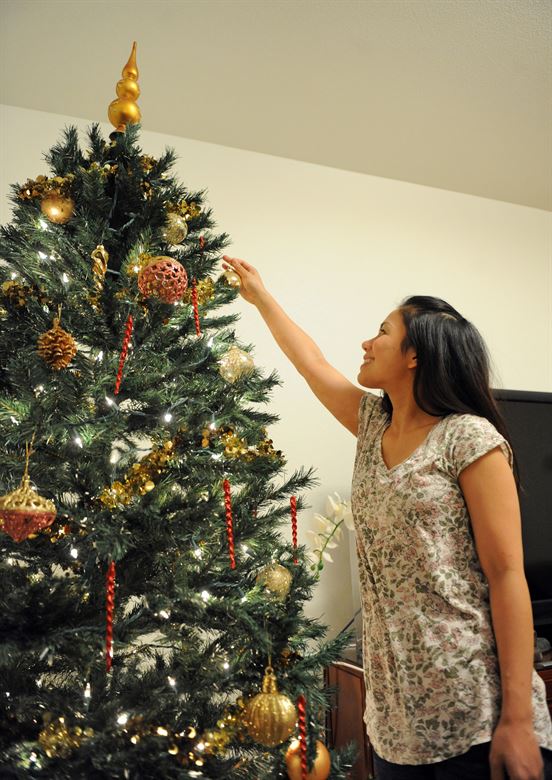While many department stores may have treated any time after Halloween as fair game for Christmas sales, most Nevadans agree that Christmas shopping and decorating really kicks off in late November or early December. Some families search snow-capped forests for the perfect Douglas fir on which to hang their family heirloom ornaments. Lights are strung on the eaves of many homes, and the twinkling of the decorations can brighten even the darkest December evening. In the midst of all this cheer, it’s easy to lose yourself momentarily. What many don’t realize is that a temporary loss of focus can cause Christmas accident injuries.
Injury Demographics
Christmas injuries are a real issue. The U.S. Consumer Product Safety Commission (CPSC, a federal agency) documented 1,700 emergency room visits at only 100 hospitals between 2011 and 2015. (There are, of course, many more than 100 hospitals nationwide: the American Hospital Association tallies more than 6,000 hospitals across the country. [1]) Many of these injuries accrued to very young children who had swallowed small ornaments or had run-ins with stockings or heavy metal stocking holders. The second largest demographic to suffer from Christmas injuries was the parents of these small children (adults between the ages of 25 and 55). [2] These statistics are likely unsurprising to current (or former) parents with small children, as they understand the special distractions and associated risks that come with holiday preparation and celebration.
Most Common Injuries
Many of the most common Christmas injuries come from accidents related to decorating trees and houses. Decorating for the holidays frequently involves using ladders to reach high places. It also brings people in contact with potentially hazardous materials, including electrical cords and glass lightbulbs. Some examples of injuries that occur while decorating for the holidays are:
- Trees catching fire, resulting in burns or property damage
- Electric shock from fraying cords
- Outside fires caused by Christmas lights
- Christmas tree injuries from falling trees
- Injuries while hanging lights on houses and trees, including falls
While these injuries are generally a pre-holiday risk, there are also hazards associated with the celebration of Christmas itself. Common injuries on Christmas Day include:
- Slipping on stairs, possibly due to alcohol consumption
- Tripping on toys and cars left on the ground
- Hurting one’s back while carrying heavy luggage
- Suffering burns while attempting to burn wrapping paper in the fireplace
- Lacerations while opening presents
- Kitchen and food-preparation injuries [3]
From a medical perspective, the injuries doctors most often see in the ER are:
- Laceration
- Strain or sprain
- Contusions, abrasions
- Fracture
- Ingested foreign objects
- Internal organ injury
- Foreign body
- Puncture
- Nerve damage
- Concussion
- Dislocation
- Dermatitis/conjunctivitis
- Burns [4]
What Is to Blame?
According to the National Accident Helpline, many of these holiday injuries are caused by a phenomenon called “festive fear.” Festive fear is a phenomenon that encompasses stress related to the pressure of hosting a perfect Christmas celebration. It can take hold in the weeks leading up to Christmas as well as on the big day itself. Festive fear can compound the already present risk of injury during the holiday season. [5]
According to this study, more than 25 percent of people feel more stressed than usual during the holiday season, with this stress being more pronounced among women than men. Pressure to cook and host elaborate celebrations is one of the biggest stress factors. Many find that their home is messier than usual during the holiday season and say they are more likely to panic and rush through chores. This can lead to mistakes and serious accidents in the days leading up to Christmas. [6]
Staying Safe on Christmas
If you are worried about succumbing to festive fear this holiday season, there are a few simple steps you can take to help keep yourself and your family safe and accident-free. Avoid fires and electrical issues by checking any lights you put up for fraying ends or damaged fittings. Switch off your lights before you leave the house, and unplug the Christmas tree lights before watering the tree. Don’t overload electrical sockets to avoid overheating and electrical fires. Have your chimney swept before starting any festive Christmas fires. [7] (And recycle that wrapping paper, don’t burn it!)
In order to avoid slip and fall and other household injuries over the holidays, get yourself a proper step ladder for hanging Christmas decorations, and avoid standing on makeshift ladders, such as stools, chairs, and boxes. Buy a tree that is a manageable size for decorating, reducing the risk of you falling while hanging lights or it falling and hurting someone underneath. Don’t let clutter pile up, especially in walkways where someone could step on it or trip over it. [8]
Keep your children safe on Christmas by keeping small decorations out of the house, as these could become a choking hazard. Remember the both holly and mistletoe are poisonous plants, and that even a few holly berries could be poisonous to a dog or young child. If you have young children visiting your house for Christmas, make sure to child-proof before they arrive. Make sure that someone has an eye on small children at all times, even during social gatherings, and check that all toys given as presents are age-appropriate. [9]
[1] https://www.aha.org/statistics/fast-facts-us-hospitals
[2] https://qz.com/859303/americas-most-common-christmas-related-injuries-in-charts
[4] https://qz.com/859303/americas-most-common-christmas-related-injuries-in-charts
[5] https://www.national-accident-helpline.co.uk/news/12-hazards-of-christmas
[6] Ibid.
[7] Ibid.
[8] Ibid.
[9] Ibid.


